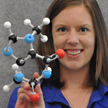Question: How do you compare apples with oranges?
Asked by jazmincallaghan to Dirk on 14 May 2012.
Comments
-
commented on 14 May 2012:
Put them in buckets. The heavier bucket wins!
🙂
-
commented on 14 May 2012:
But Yusuf, they do not have the same density or composition. Also do you count the orange peel or do you peel them 1st. You need some consistency.
-
commented on 14 May 2012:
Depends on why we are comparing them. By all means juice them, dice them, powder them if you want to look at the their chemical composition. But if you have to carry them, maybe weight is the best faqctor. On the other hand I just checked some prices Granny Smith Apples are going for $2.90 per kg at Coles while the Oranges are down to $1.66 per kg, so it is the season to eat oranges!
🙂
-
commented on 14 May 2012:
And now you know why it is soooooo important to take into account seasonal (and preferably monthly) effects in biological models and not just yearly averages.
-
commented on 15 May 2012:
Aside from price, Granny Apples taste bad raw – they are technically an apple grown for pies (in which they taste lovely).
-
-
-
-
commented on 14 May 2012:
Research has actually been conducted into this issue. Someone at NASA has successfully compared apples and oranges in a scientific study by using infra-red spectroscopy to compare the infra-red properties of both fruits. Turns out the profiles of each are very similar and the conclusion of the researchers is that the argument that you can’t compare apples to oranges is actually invalid! Warning thought , it is not very robust research, but good fun nonetheless!
http://improbable.com/airchives/paperair/volume1/v1i3/air-1-3-apples.html-
commented on 14 May 2012:
hehehe … so they powdered them rather than juicing them. In essence they distilled them into a comparable form. Cool!
-









Ah yes …
well that is an old term used to describe when trying to compare two different things which one should not really be comparing. This happens a bit from time to time in science. Especially when comparing raw observational data and model data. When I get datasets from several different sources one cannot compare them directly to each other. So I have to “distill” them to versions that make sense to compare … if they can be.
In the case of apples and oranges I’d say make them into juice. Then taste them independently and write down your comments.
0